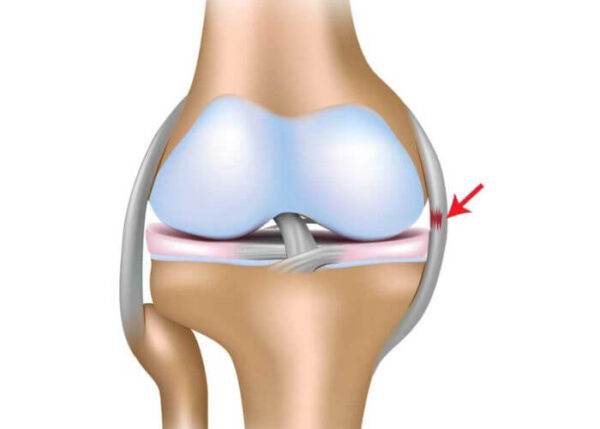Medial Collateral Ligament (MCL) Tear Specialist

Are you an athlete who participates in contact sports, or jumping and landing? If so, you may be at risk of tearing your MCL. An MCL injury can be sustained during an awkward landing in athletic activities, dirt biking injury or from a tackle in football. MCL tear specialist, Dr. Jervis Yau provides diagnosis and both surgical and nonsurgical treatment options for patients in Santa Barbara who have developed an MCL tear. Contact Dr. Yau’s team today!
What is an MCL Tear?
The medial collateral ligament (MCL) is located on the medial (inside) of the knee and extends from the medial epicondyle of the femur (thighbone) to the top of the tibia (shinbone). Responsible for providing stability when the joint is moved from side to side, the MCL can become injured from a direct blow, accidental fall or landing awkwardly during athletic activities. Injuries to the MCL can range from a mild sprain to a complete MCL tear. Orthopedic knee specialist serving the Santa Barbara, Goleta, Santa Maria and Ventura, California areas, Dr. Jervis Yau is available to help patients return to an active, healthy lifestyle following a MCL injury.
Medial collateral ligament injuries are graded on a scale similar to that of ACL injuries. Higher numbers indicate more severe injuries as follows.
- Grade 1 represents a strain or partial MCL tear
- Grade 2 represents a more severe partial tear with mild knee instability
- Grade 3 represents a complete MCL tear with significant instability to stress testing
What are the Symptoms of an MCL Tear?
The hallmark symptom of medial collateral ligament injury is medial knee pain. Some patients may also experience bruising and swelling of the soft tissue around the MCL. In more severe cases of MCL tears, patients may experience profound knee instability, pain and dysfunction.
How is an MCL Tear Diagnosed?
Dr. Yau begins by performing a complete physical examination and medical review. X-rays are commonly obtained to rule out fractures and other bone related issues. A stress x-ray may be required to assess the amount of joint gapping and instability due to MCL insufficiency. Dr. Yau may also recommend a MRI scan to determine the severity of MCL injury along with ruling out additional concomitant injuries.

What is the Treatment for an MCL Tear?
Treatment of a medial collateral ligament injury depends on the degree of injury and severity of symptoms.
Non-Surgical
Most grade 1-2 MCL injuries respond well to non-surgical treatment. Dr. Yau will typically prescribe a combination of bracing, ice, rest and physical therapy.
Surgical
In unstable grade 3 MCL tears or those that don’t respond to conservative treatment measures, Dr. Yau may recommend meniscus surgery. This requires Dr. Yau to repair or reconstruct the torn MCL. If a repair is necessary, he will suture the torn ligament in order to promote healing. Occasionally, Dr. Yau may augment the repair by adding a graft if the native ligament is thin or insufficient. If reconstruction is necessary, the MCL will be reconstructed using a strong tendon graft from the patient (autograft) or from a donor (allograft).
For additional information on a medial collateral ligament injury, or to determine if you require surgery for your MCL tear, please contact the orthopedic office of Dr. Jervis Yau, knee specialist located in the Santa Barbara, Goleta, Santa Maria and Ventura, California area.